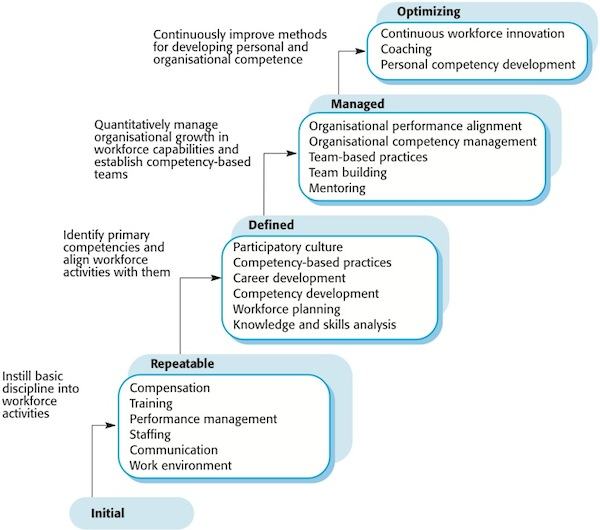
The Software Engineering Institute (SEI) in the United States is engaged on a long-term programme of software process improvement. Part of this programme is the Capability Maturity Model (CMM) for software processes, which I discuss in Chapter 28. This is concerned with best practice in software engineering. To support this model, they have also proposed a People Capability Maturity Model (P-CMM) (Curtis, Hefley et al. 2001). The P-CMM can be used as a framework for improving the way in which an organisation manages its human assets.
Like the CMM, the P-CMM is a five-level model, as shown in Figure 1.

Figure 1 The People Capability Maturity Model
The five levels are:
Curtis et al (Curtis, Hefley et al. 2001) state that the strategic objectives of the P-CMM are:
The P-CMM is a practical tool for improving the management of people in an organisation because it provides a framework for motivating, recognising, standardising and improving good practice. However, like all capability models created by the SEI, it is designed for large rather than small companies. It reinforces the need to recognise the importance of people as individuals and to develop their capabilities. Of course, the complete application of this model is very expensive and probably unnecessary for most organisations. However, it is a helpful guide that can lead to significant improvements in the capability of organisations to produce high-quality software.